by hankinslawrenceimages | Mar 4, 2010 | Flowers, Malvaceae Family
Last summer I photographed several Rose of Sharon (Hibiscus Syriacus) flowers. Rose of Sharon are members of the Hibiscus genus and the Malvaceae family. Originally native to Asia, the Rose of Sharon are grown throughout much of the US. They are hardy from Zones 5B through 9A. In the summer, it produces large showy flowers on a shrub that grows to 8 to 10 feet tall. The US Forest Service has a wonderful PDF with information about growing Rose of Sharon plants.
One of the Rose of Sharon plants I photographed last summer was in the Cataloochee section of the Great Smoky Mountains National Park. Adjacent to the Palmer House, this Rose of Sharon had flowers in multiple colors growing on the same plant.
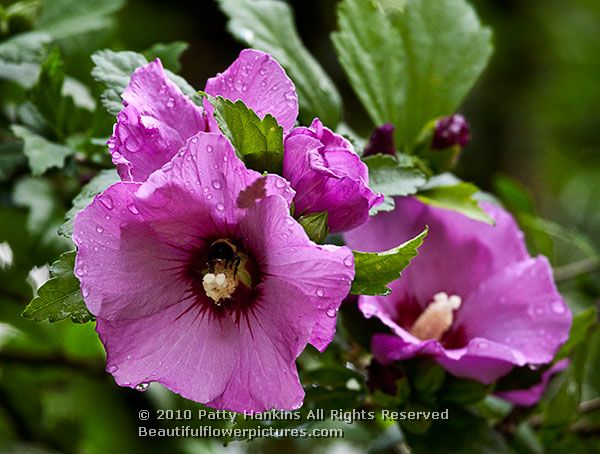
(c) 2010 Patty Hankins
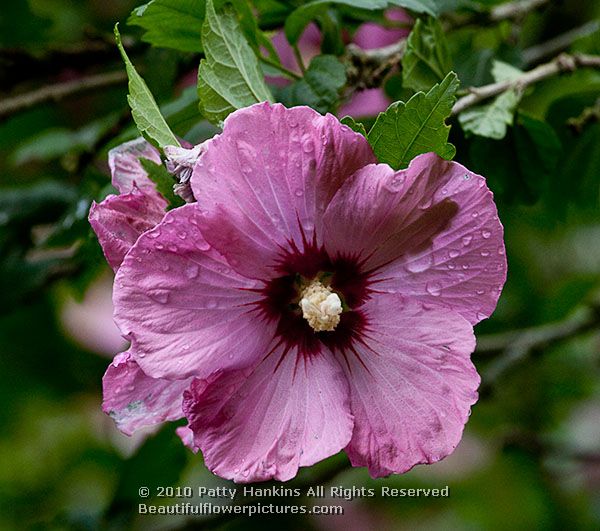 (c) 2010 Patty Hankins
(c) 2010 Patty Hankins
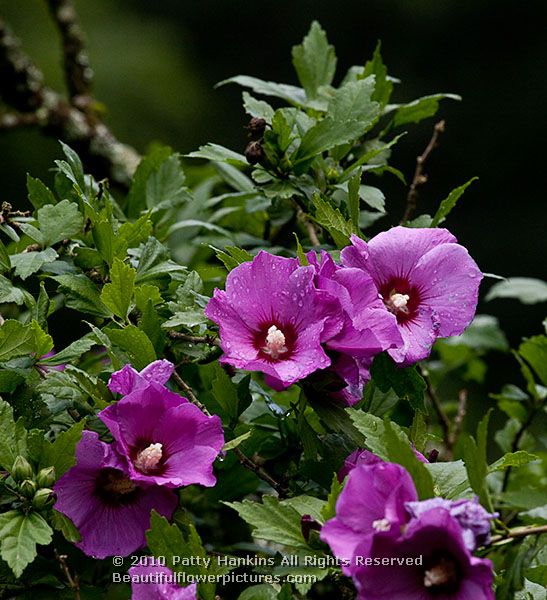 (c) 2010 Patty Hankins
(c) 2010 Patty Hankins
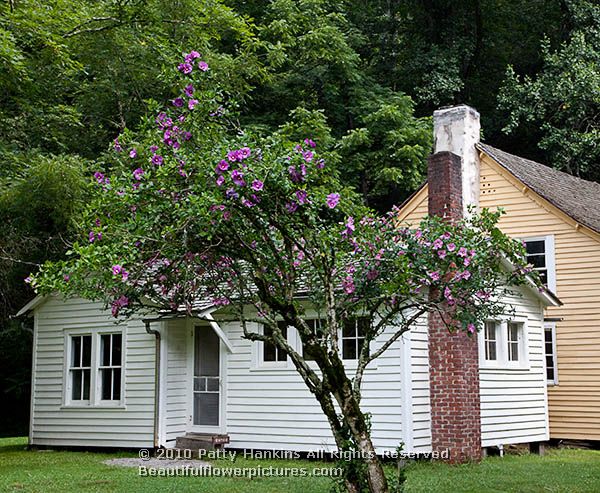 (c) 2010 Patty Hankins
(c) 2010 Patty Hankins
I photographed a lovely purple Rose of Sharon at the North Carolina Arboreatum in Asheville. The flowers of the Marina Rose of Sharon were used in dye making.
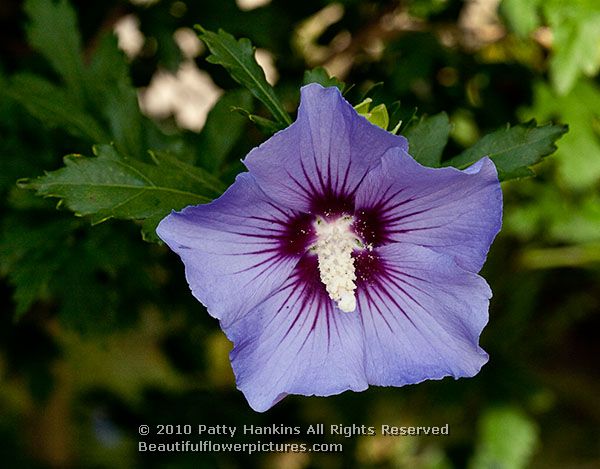 (c) 2010 Patty Hankins
(c) 2010 Patty Hankins
And finally a wonderful white and red Helene Rose of Sharon photographed at Brookside Gardens in Wheaton, Maryland.
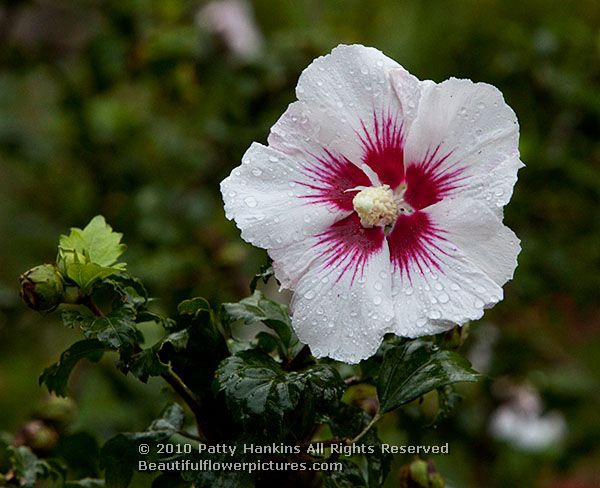 (c) 2010 Patty Hankins
(c) 2010 Patty Hankins
by hankinslawrenceimages | Jul 30, 2009 | Photo Locations
One of my goals for my recent trip to the Great Smoky Mountains National Park was to see the elk. In 2001, elk were reintroduced to the Smoky Mountains. The new herd was started with 25 elk from the Land Between the Lakes National Recreation Area. Since then, the herd has grown to almost 100 elk. Most of the elk can be found in the Cataloochee region of the park.
So last Tuesday morning, I was waiting at the gate for the road out to the meadows to open. Within minutes, I saw several large bull elk out in the field! They are incredible to see. Be sure to check out the racks of antlers on these bull elks.
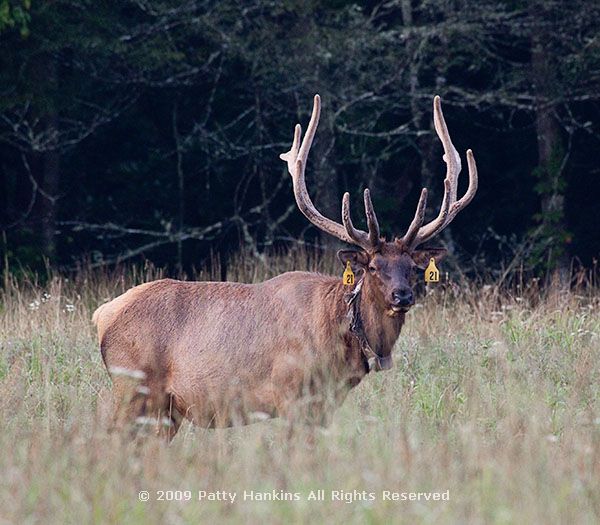
(c) 2009 Patty Hankins
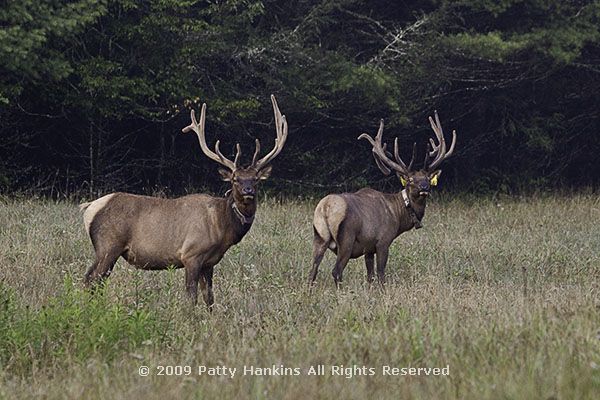 (c) 2009 Patty Hankins
(c) 2009 Patty Hankins
That morning, I also saw a few female elk off in the distance in one of the other fields. I wasn’t able to photograph them.
But I was still really happy with the photos I had taken – and I’d seen the elk in the wild!
The next morning, I was at the Mountain Farm Museum at the Oconaluftee Entrance to the park. As I was photographing Holly, the extremely friendly barn cat, I saw what I thought was the biggest deer I’d ever seen walking across the field. It never occurred to me that it was another elk – since I thought the elk were only at Cataloochee – and this animal didn’t have any eartags or a radio collar.
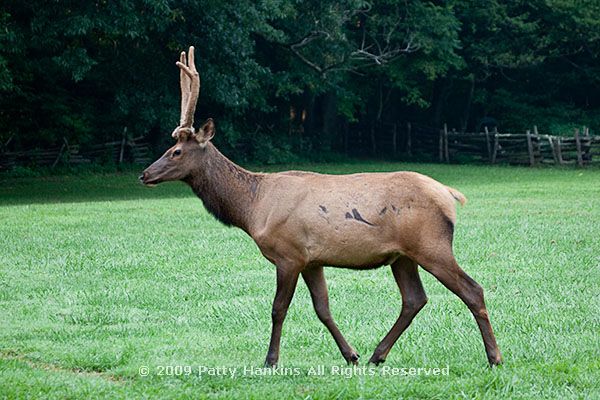 (c) 2009 Patty Hankins
(c) 2009 Patty Hankins
After a while, the “deer” wandered off and eventually came back and entered into the farm area. This next photo should have made it peferctly clear that this wasn’t a large white tailed deer.
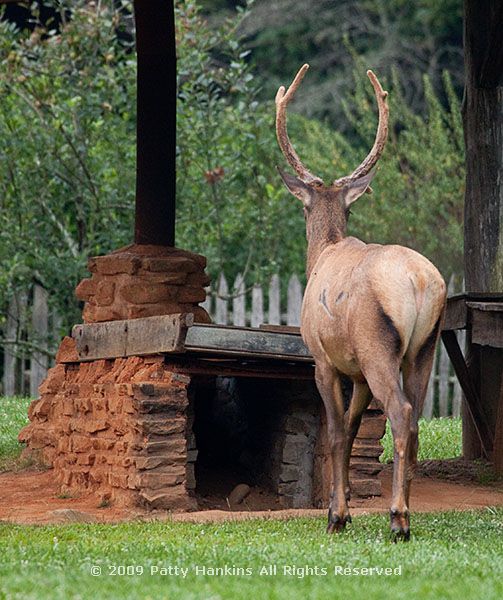 (c) 2009 Patty Hankins
(c) 2009 Patty Hankins
I think was checking out the exhibits at the Mountain Farm Museum. He then wandered over to the fruit trees for a snack.
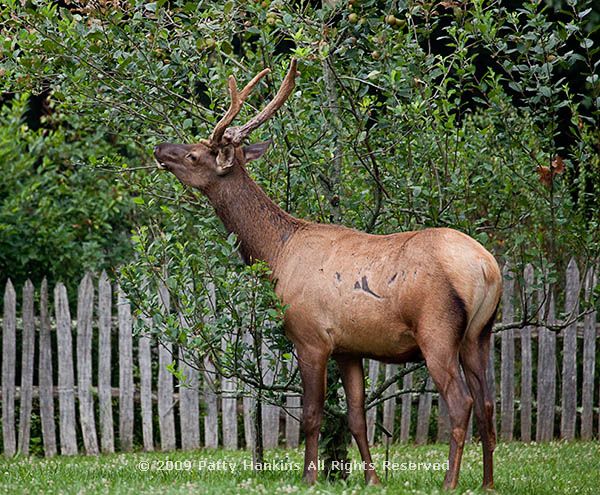 (c) 2009 Patty Hankins
(c) 2009 Patty Hankins
Then he decided it was time to visit the garden for a bite to eat. He has a green leaf from the garden in his mouth in this next photo.
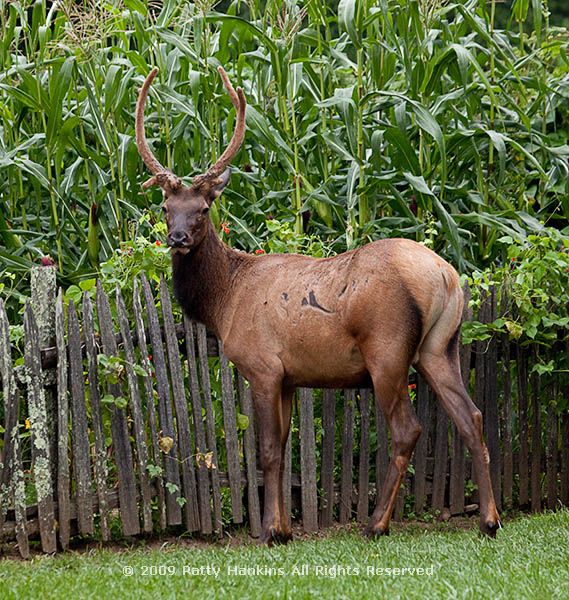 (c) 2009 Patty Hankins
(c) 2009 Patty Hankins
For the next few minutes, the elk grazed at the garden and walked around the Mountain Farm Museum, posing nicely in a few spots.
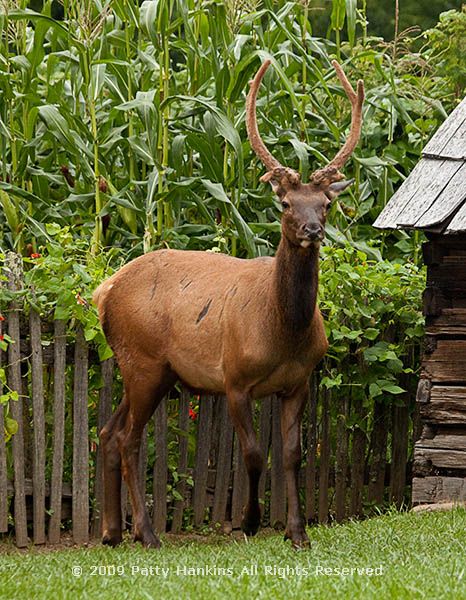 (c) 2009 Patty Hankins
(c) 2009 Patty Hankins
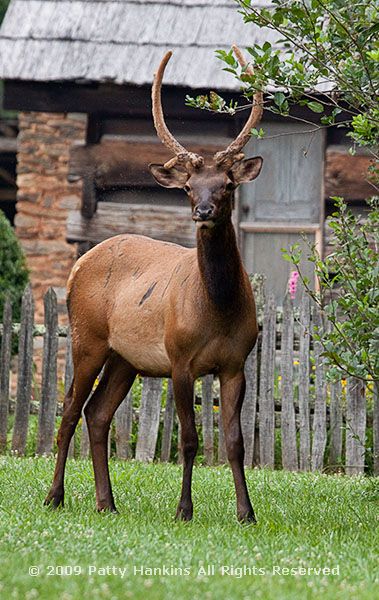 (c) 2009 Patty Hankins
(c) 2009 Patty Hankins
Finally, after a last visit to the fruit trees for a bite to eat, the elk headed off into the woods as more people started arriving at the Mountain Farm Museum.
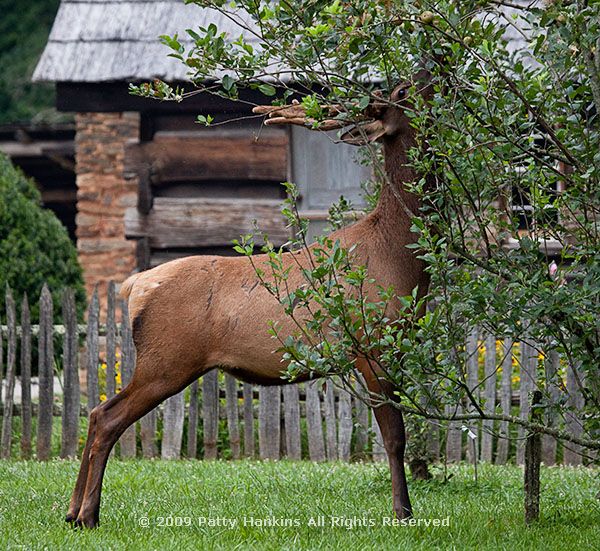 (c) 2009 Patty Hankins
(c) 2009 Patty Hankins
I arrived at the Mountain Farm Museum shortly after 7 AM and was photographing for over an hour. For most of that time, I was the only person there. It was wonderful.
Later that same day, I was at Cades Cove and saw some white tailed deer – and that’s when I began to wonder if I’d really been photographing a large deer that morning. After checking with some people on Twitter and Facebook, I found at that some of the elk have migrated to the Cherokee/Oconaluftee area.
On Thursday, I spoke with one of the park rangers, who confirmed that yes it was an elk I had photographed. She was able to identify him as one of the male yearling elk born last year. She had a bit of a laugh when she saw one of the photos – apparently the elk aren’t supposed to go into the Mountain Farm Museum area – much less eat the fruit off the trees or snack from the garden!
Seeing and photographing the elk at Great Smoky Mountains National Park was amazing. They are beautiful animals. They can also be very dangerous – they are big – and if they see you as a threat you can be seriously injured by an elk. Park regulations require that people stay at least 50 yards away from the elk. All of my photos were taken from a distance using my 100-400mm lens at 400mm. The photos are all crops of the original images.
If you get a chance to visit the Smoky Mountains, be sure to try to see the elk. They are magnificent!







 (c) 2009 Patty Hankins
(c) 2009 Patty Hankins (c) 2009 Patty Hankins
(c) 2009 Patty Hankins (c) 2009 Patty Hankins
(c) 2009 Patty Hankins (c) 2009 Patty Hankins
(c) 2009 Patty Hankins (c) 2009 Patty Hankins
(c) 2009 Patty Hankins (c) 2009 Patty Hankins
(c) 2009 Patty Hankins (c) 2009 Patty Hankins
(c) 2009 Patty Hankins (c) 2009 Patty Hankins
(c) 2009 Patty Hankins